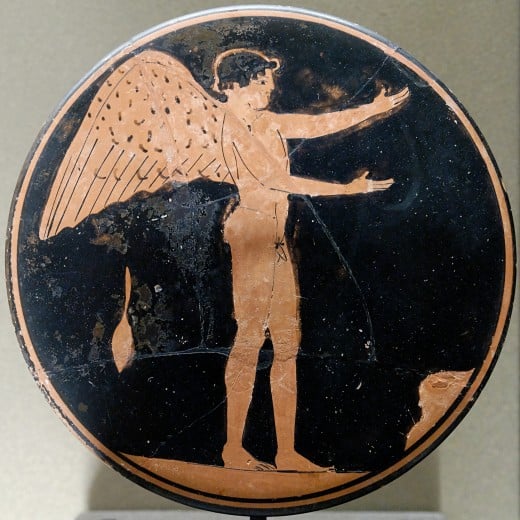Eros and the Bible

Eros in Greek Mythology
In Greek mythology Eros was the god of love. According to the story, he was the fourth god to appear when the world began. He is mentioned in Greek writings as far back as 700 BC. In early times he was a cult figure and later he was worshipped by a fertility cult.
In illustrations we find that Eros was always pictured as an adult in Greek mythology, but in Roman mythology the god of love was seen as a child called Cupid.
From both these sources we find a number of words in English that are connected with different areas of romantic and sexual love, such as erotic, erotica, erotomania, erogenous and even cupidity.
Eros as a Concept
The usually accepted concept of eros is that the word represents the love between a man and a woman. It also suggests passionate physical desire, as we can see from the English words above that are derived from it.
Psychologically speaking, eros is linked with self-preserving instincts as opposed to self-destructive instincts. Looked at from this viewpoint we can see that this notion seems to put the focus of eros on gratification for self, rather than on giving pleasure to another.
The Old Testament Concept
In my previous article, Love and the Bible, four Greek words for love were mentioned. The first was eros. When we think about romantic, sexual love and the Bible, our thoughts probably go firstly to Adam and Eve and the concept that the love they shared must have been perfect before their temptation and the Fall. Then our thoughts probably go to the beautiful images invoked by the poetry of The Song of Solomon.
However, the Old Testament was not written in Greek, but mostly in Hebrew. I have read that there are several Hebrew words that are translated into English as 'love,' but that they actually have subtly different meanings. The most frequent is aheb (a Hebrew root). It was originally used to describe fertility cults in ancient civilisations and also the passionate love between a man and a woman.
Aheb is found in the Bible over two hundred times. The first to use it there was Hosea and instead of linking it with local fertility cults he linked it with marriage.

Eros and Christian Marriage
Eros, from a human vantage point, is a wonderful gift that God has given to couples to celebrate their love of each other. It's a delight for husband and wife to share this kind of love, not just for procreation, but as an expression of joy in their union.
And what a delight that can be, especially when that union is begun and ended in prayers of praise to our Heavenly Father for such a gift!
Eros and God
In The Old Testament, the Decalogue, the Ten Commandments, puts God first. Most of the Commandments are negative but those concerned with God and loving one's neighbour are positive.
We are told to 'worship only God.' Is worship connected with loving God? If we are to obey the Commandments, then surely when we worship him it must embrace adoring reverence and awe. This is a different kind of love from what we think of as being connected with eros.
Hosea used that Hebrew root, aheb, which was originally defined in a very similar way to eros, but he gave it a new meaning. Aheb, as we have seen, was used to describe pagan fertility cults, but Hosea extended and raised its meaning; in fact, it was completely and subtly changed so the word could be used to describe love and the One True God. By connecting the personal quality of aheb Hosea contributed to humanity's growing understanding of God's great love as He gradually revealed more and more facets of HIs character in the Old Testament writings over a long period of time. Like eros, aheb is personal, spontaneous and intense, but it goes so much further and is lifted to a much higher plane.
The intensity and joy of eros and aheb in human love, helps us to gain a greater understanding of how deeply God loves us. What a joy it can be when we accept His love and channel our delight and joy into the intensity of our love and praise for Him.










